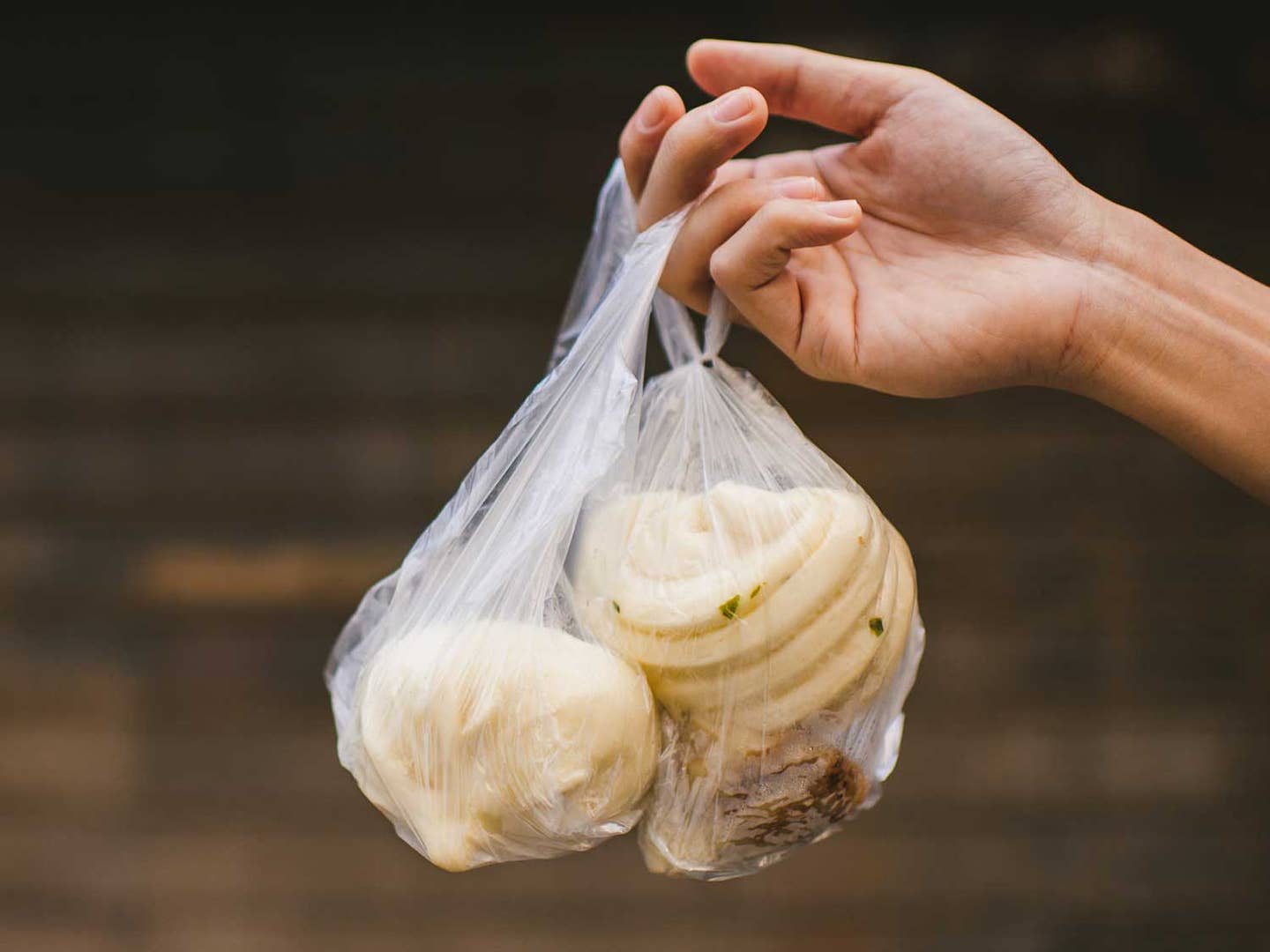
The Breakfast Foods You Have to Try in Shanghai
Don’t skip out on the most important meal of the day when you’re in Shanghai
It’s a common saying that in order taste the true flavor of a place, do what locals do. In Shanghai, it’s the early morning breakfast market.
In the 1840s, Shanghai, situated conveniently right on the Yangtze River Delta, officially became a port, open to international trade. It transformed Shanghai from a fishing village into a commercial center. Not only is it often hailed as the “Paris of the East”, domestically, it’s known to be the shining city of opportunity, where jobs abound. As people from all over China came to Shanghai, they brought with them their food, and instead of opening brick and mortar restaurants, they opened more flexible and much less fiscally risky food stands.
Today Shanghai is a modern city, with many international influences. Yet pockets of old Shanghai exist, seen in the ben bang cai (本帮菜) Shanghainese food, in the Shanghainese dialect (distinguishing the locals), and in the rituals, such as wind-drying meat every winter or making sticky rice balls to celebrate the new year, still practiced and passed on from generation to generation. Nowhere is this more evident than in the daily breakfast markets.
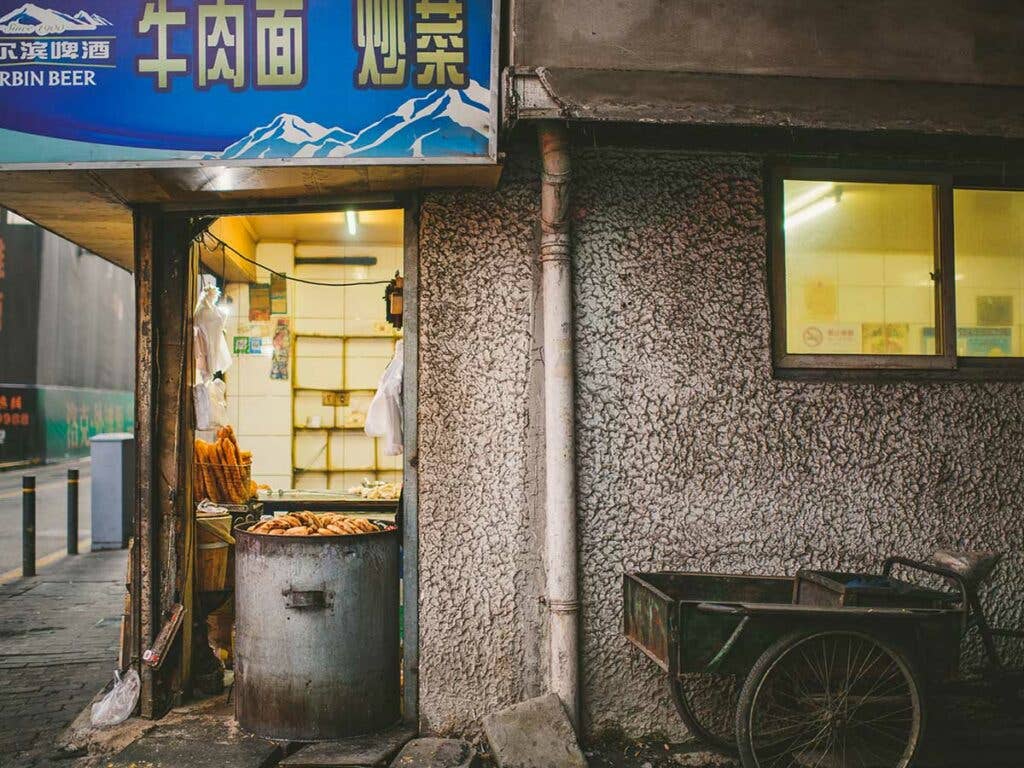
My mom and my dad were born and raised in Shanghai. They moved to America for graduate education and took my siblings and me to spend summers in the city. We would stay with family in Shanghai, so we ate a lot of home-cooked meals, but the exception was always breakfast.
When I think of these trips, I remember the hot, blanketing humidity. I remember the heady aroma of the herbal ointment we spread over our numerous mosquito bites. I remember the juicy pork baozi, the wontons that we ate almost every morning. We would wake up to find my aunt already back from her morning market excursion, offering bags with steam still floating off the fresh buns. Of course, my aunt would buy too much, thinking we’d eat three baos for breakfast each (and sometimes we did).
My mom has told me that in the past, when money was tight, breakfast was simply congee or leftover rice with fermented toppings like radish or tofu. The breakfast foods that are so accessible today were a luxury that many couldn’t afford. Today, eating breakfast out is as commonplace as eating congee at home. Young professionals grab some on the way to work. Schoolchildren pick some up on the way to school. Elderly folks go for their morning walk and then buy too many bao for their families.
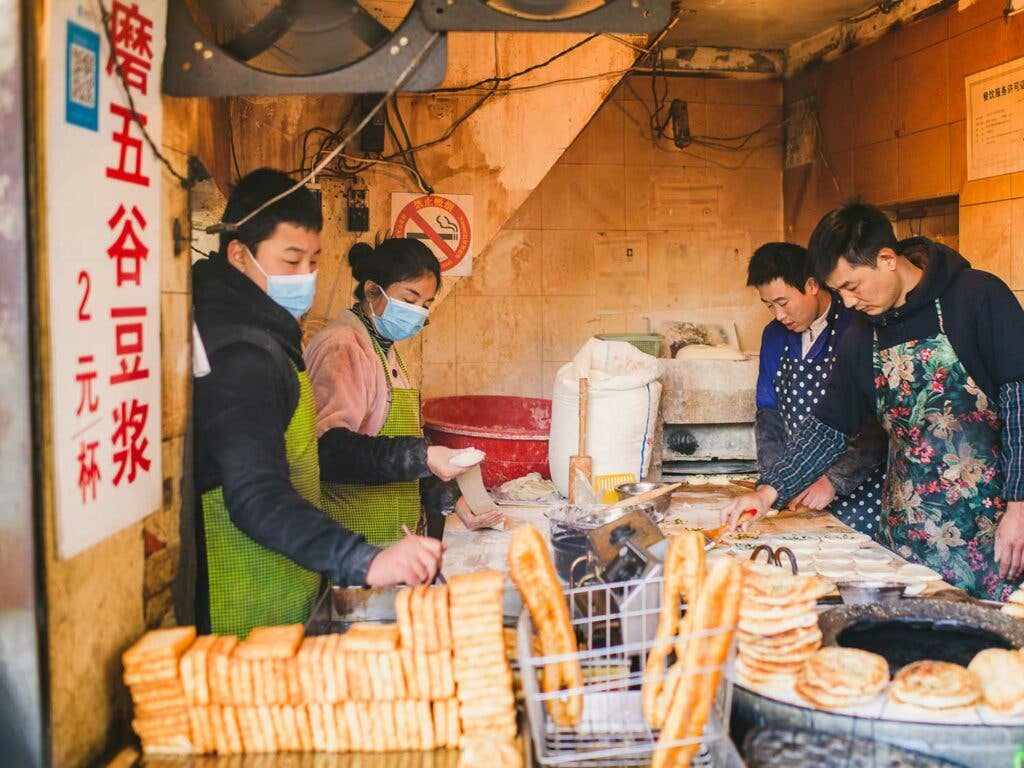
There used to be more vendors selling breakfast street foods, with portable carts and stands peppering the sidewalks. However, more and more are forced to move to make space for more skyscrapers, high-rises, or are shut down due to stringent vendor regulations
One vendor told me that there used to be many more sidewalk vendors selling anything from soy milk to pan fried dumplings, even freshly-caught fish. Now, you need expensive business licenses, and many simply packed up their things and left. Today the culture of breakfast food survives – the good stuff is just harder to find.
These markets are where you’ll find the classic, traditional foods of Shanghai, as well as the locals who cherish them. They allow you to immerse yourself in Old Shanghai culture. Sit down elbow to elbow with a stranger, with a steaming bowl of soy milk. Help yourself to toppings of tiny dried shrimp, scallion, chili oil, and fried dough. Get a piping bowl of noodles and slurp it while standing up. Order a ball of sticky rice and make your way to your next destination, enjoying the hefty portion.
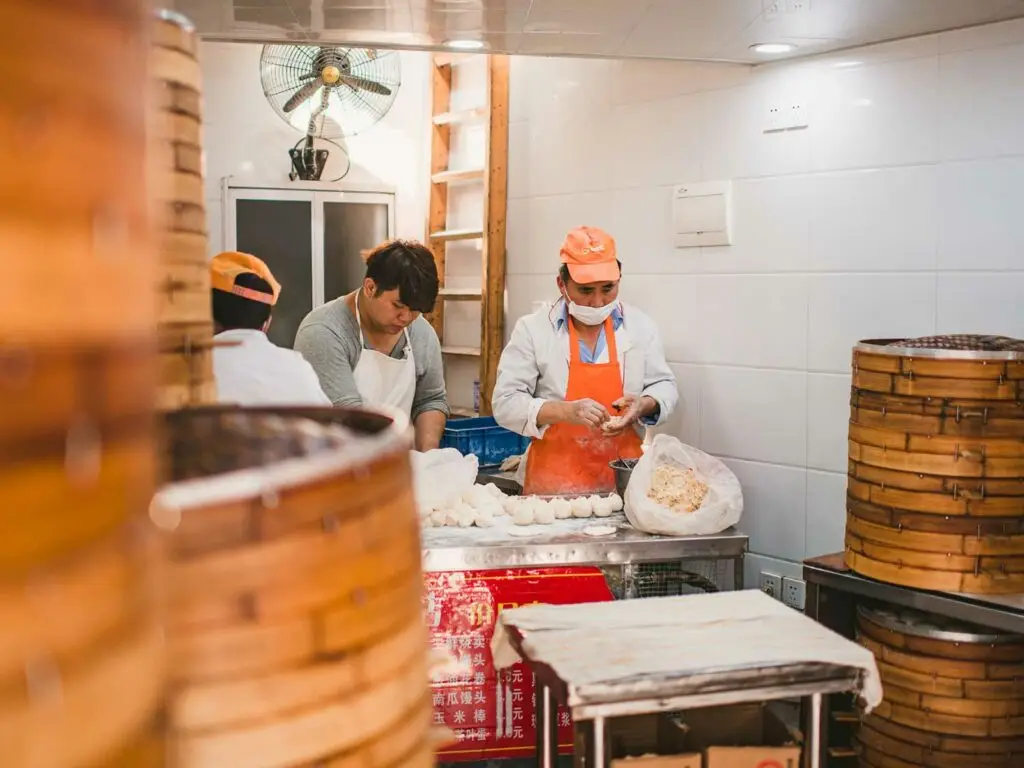
Where to get them:
The easiest way to find the perfect Shanghai street breakfast is just to wander. I’ve found that the path to metro stations are usually peppered with breakfast vendors, but beware: the ones right next to the station can be a little iffy. Sometimes, shops that sell one thing during the day will convert to a breakfast stand in the morning before business hours. If you don’t have time to wander, here are a few intersections to head towards:
Intersection of Chang le Lu Road (长乐路) and Xiang Yang Lu Road (襄阳路) in the Xuhui district.
Intersection of Da Pu Road (打浦路) and Qu Xi Road (瞿溪路).
Intersection of Shun Chang Lu Road (顺昌路) and Yong Nian Lu (永年路) in XuHui district, near the Madang Lu metro stop on line 9.
Huang He Lu Road (黄河路), next to People’s Square.
Wu Jiang Road (吴江路小吃街), Jing An District, near NanJing Xi Lu station on line 2.
8 Shanghai Breakfast Foods
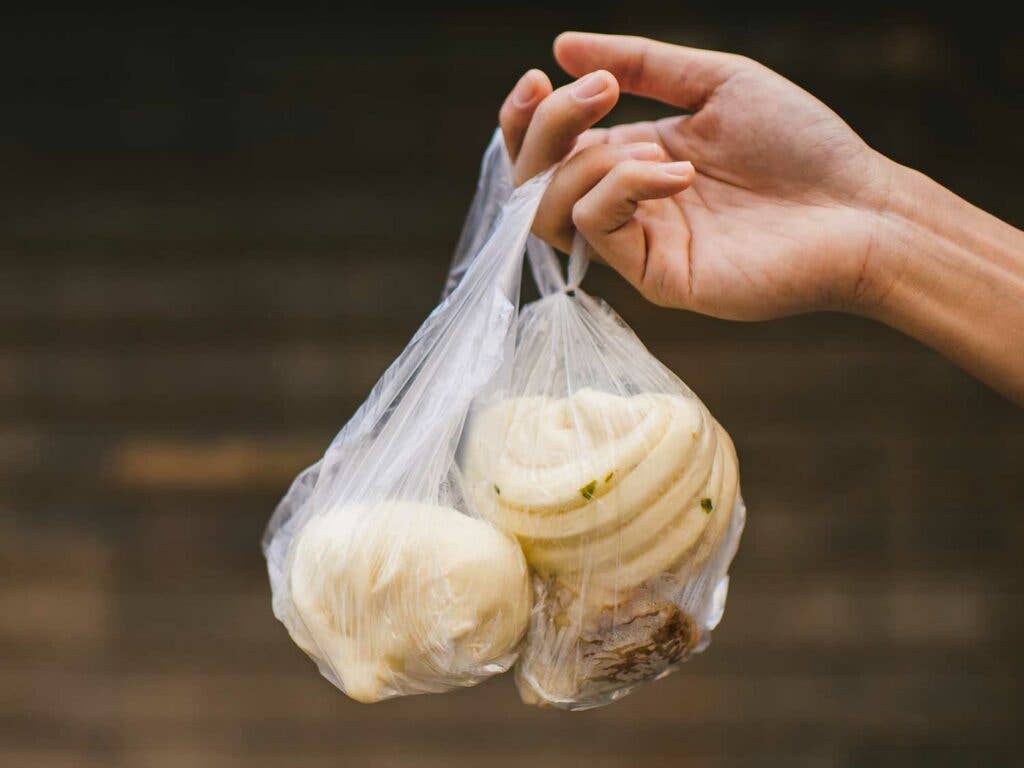
The Four Warriors
Chinese foods are often given poetic names, elevating the food and sparking imagination. The most classic Shanghai breakfast has such a name: the Four Warriors, si da jin gang (四大金刚). The Four Warriors by themselves refer to the legendary gods from the Han dynasty, guards of Buddhism. In the context of breakfast, The Four Warriors refer to four specific treats – an homage to Old Shanghai, an indispensable symbol of the breakfast culture: glutinous rice rolls (ci fan, 粢饭), soy milk (dou jiang, 豆浆)、fried crullers (you tiao, 油条)、and sesame pancake (da bing, 大饼).
Ci Fan (粢饭), Glutinous Rice Rolls
This is a bold breakfast option and one of the most popular ones in Shanghai. Glutinous rice is rolled into a ball, stuffed with fried cruller, pickled vegetables, light and airy pork floss, and sometimes even a hard boiled egg. Make sure to try the sweet kind, where instead of pickled vegetables, there’s a black sesame and sugar mix, and sometimes even crushed peanuts. Rolled up, it’s a rather dense and heavy sphere, but inside is a wonderful nest of contrasting textures – crispy fried cruller with the soft rice, sugary mix with savory pork floss.
Dou Jiang (豆浆), Soy Milk
Soy milk is so misunderstood–the packaged soy milk in American is nothing like the freshly pressed soy milk in China. Soy milk is ladled into cups or pre-sealed into plastic vessels for ease of drinking on-the-go. Alternatively, sit down and have a bowl of hot soy milk, ladled from large vats of steaming soy milk, and either sweeten it with a side of fried cruller, or have it savory with a drizzle of soy sauce, chunks of fried cruller, and heaps of scallions. When I’m in China, instead of a morning coffee, I instead go for the hot sweetened soy milk.
You Tiao (油条), Fried Cruller
Fried crullers are perhaps one of the most recognizable breakfast foods in the west. These are shaped by placing two strips of dough on top of each other, pressing and sealing them together with a chopstick. Then they’re stretched into a long strip and immediately fried. It rests briefly in a wire basket to allow excess oil to drain, then served hot and extremely fresh. They’re crisp and golden on the outside, with hallmark large holes comprising the soft interior texture. You tiao is served in many ways, but perhaps my favorite is tearing it into 2-inch chunks and dropping them into a bowl of hot sweetened soy milk.
Da Bing (大饼), Sesame Pancake
Da bing is literally translated to “big pancake”, but a more descriptive name would be a sesame pancake. These palm-sized breads, studded with sesame seeds, are baked in a cast-iron oven. The rectangular ones are salty, while the rounder ones are sweet, and you can get them stuffed with scallions. Some people even like to stuff fried cruller in their da bing and eat them together like a sandwich.
Bao zi (包子) Bun
This breakfast item, more than any other, says Shanghai to me. Juicy, fragrant pork filling encased in a pillow-y, fluffy steamed bun, this pork baozi is what I crave the most when I’m back in the States. They’re freshly made and approximately the size of your palm (though this varies: I’ve seen places boasting “big” baozi that could fill an entire hand). There is also an incredibly aromatic vegetable filling option with greens (usually choy sum or bok choy), spiced tofu, and shiitake mushroom.
Wontons (馄炖)
Soup wontons are like a warm hug in the morning. It’s one of my favorite cold-weather breakfast options. Small wontons filled with aromatic pork are served in a rich piping-hot broth, with a kick of ground white pepper. Only a select few vendors have an indoor space, and even then they might have only a few tables available (and if you don’t move fast, they’ll always be full). This is why you’ll find people eat these bowls standing up or leaning against a wall.
Shaomai (烧卖)
More popularly known as shumai, Shanghai’s shaomai is unique in that it’s made up of sticky rice instead of pork and shrimp. It’s an open-faced “dumpling” filled with tender glutinous rice tossed with shiitake mushroom and pork. They’re rather big and substantial; just one could be enough for breakfast.
Dou Fu Hua (豆腐花), Tofu Flower
When I try to describe the texture to my friends, I call it silky, soft, and cloud-like. Soy milk is curdled to become a savory custard, with a hint of soybean flavor. It’s the warm and savory base for a plethora of toppings: tiny dried shrimp, pickled radishes, fresh scallions, soy sauce, and often, a drizzle of potent chili oil.
Keep Reading
Continue to Next Story










